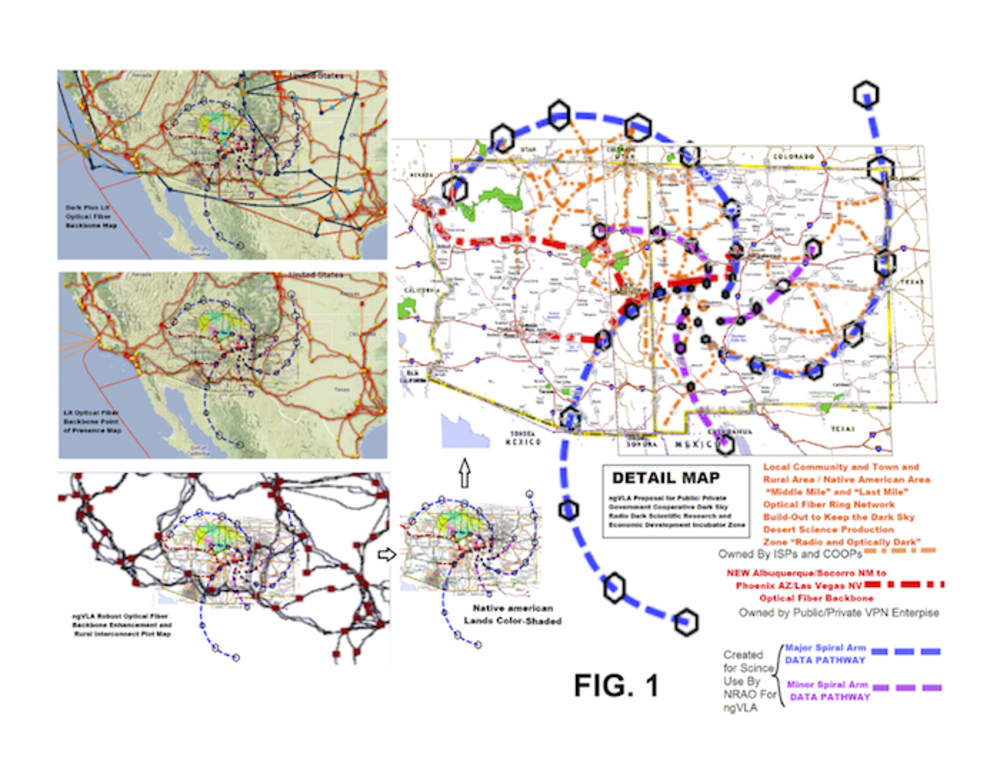Original Optical Fiber Core Networks were built along Interstate Highway routes, railway rights of way and in some cases long haul fiber optic infrastructure conduits were built in trenches that also contained natural gas pipelines. Since pipelines can corrode and even explode, that can endanger the reliability of the US vital long-haul fiber optic infrastructure, creating risk of sudden failure.
More fiber was added to the US pre-existing optical fiber backbone in original routes further increasing the singe-event failure risk.
Large regions of the Southwest were ignored when the US optical fiber backbone routes were planed due to the low population density and rugged terrain.
The false assumption was that low population density equals low Internet demand, so the needs of rural residents and Native American Tribal areas were ignored in favor of the higher Internet demand in cities.
It turns out that the low population Dark Sky Desert areas are the very best locations to produce massive amounts on treasured astronomy data, both radio and optical, precisely because the very low population density has kept those dark sky deserts free from city light pollution and radio dark for radio telescopes.
The Galactic Data Core is a networking standards product that defines methods and processes to tie together seemingly disparate and unrelated human activates into a common objective to develop a robust communications protocol, that preserves the hyper-spectrally dark desert sky sanctuary for future generations by eliminating radio interference through widespread use of fiber optics.
The Galactic Data Core provides major new long-haul fiber optic infrastructure, as it would intersect with major portions of the western US optical fiber backbone creating additional IX (Interconnection) nodes making the US optical fiber backbone far more robust.
The NRAO and the VLA want to greatly expand to form the ngVLA.
However the lack of any regional Internet Fiber backbone precludes such expansion.
By combing anchor institutions such as local schools, libraries, business enterprise and university Internet broadband demands with the recently expanding demands of science, particularly optical and radio astronomy, in meeting the data acquisition demands of analyzing the thousands of newly discovered exo-planets,
the Galactic Data Core can meet these next generation science demands while creating numerous geospatially distributed middle mile edge connectivity “Points-of Access“ available the ISPs and Tribal Area Internet Connectivity community COOPs who can then use the FCC Connect America 2016-2026 funding cycle to build-out the “Middle Miles” and “Last Miles” to provide remote areas with optical FTTH (Fiber to the Home).
(FIG. 1) An ideal shape for an expanded array of radio telescopes is the same as a spiral galaxy. Along the Spiral arms the ngVLA needs to place small arrays of radio telescope (constellations of six antennae shown)
(FIG. 2) Shows a standardized Infrastructure combining hex antennae Constellation with a data Center “Edge Connectivity” access point for ISPs to connect to.
(FIG. 3) Shows a fully completed Galactic data center in 2026 with US (Canada) and Mexico partnering in ngVLA
Like this entry?
-
About the Entrant
- Name:Patrick Ward
- Type of entry:individual
- Patent status:none








